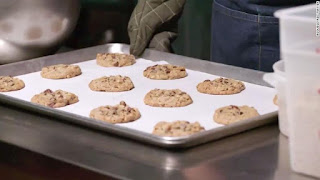Common Grammar Errors: What NOT To Write
Grammar are a persnickety…wait…let’s try that again. Grammar is
a persnickety cog in the writing machine. Try as we might, sooner or
later, every writer stumbles and makes a grammatical gaffe.
Wouldn’t
it be nice if we could write and write and not have to worry about
correcting silly grammar slipups? Of course it would.
So pour
yourself some coffee/tea/Sanka (does anyone drink Sanka anymore?), pull
up your favorite chair, and peruse a few of our favorite grammar do's
and don’ts. Hopefully, like a singular subject to a singular verb, we
can agree.
Apostrophes. Don’t put your
apostrophes in places they don’t belong. This is a mistake many writers
make that causes English majors far and wide to wail and scream out
loud.
Example: At Pizza By Luigi we offer pickup’s and delivery’s.
Sorry, Luigi, this is not correct. The above sentence would be interpreted as: pickup is and delivery is.
It should read: At Pizza By Luigi we offer pickups and deliveries.
Also,
when forming the possessive of a singular noun (that does not end in an
“s” or an “s” sound), you must add an apostrophe and then an “s”.
Example: Luigi’s pizza is the best in town, even if his grammar isn’t.
If you’re writing the possessive of a plural noun that ends in “s” or “es,” simply place an apostrophe after the last letter.
Example: The customers’ hunger subsided after eating all the pizza.
Misplaced modifiers.
Ah, the infamous misplaced modifier. Often accidentally funny, these
are the bad grandpa jokes of the literary world. But, trust us, when
editors see them they will scoff faster than you can say…well…faster
than you can say “misplaced modifier.”
A modifier is a group of
words that describes another word (or words) in a sentence. When
misplaced in the sentence, the modifier ends up describing the wrong
word (or words).
Example: Luigi serves pizza to the children on paper plates.
This suggests that the kids are all perched atop paper plates. (Hmm, would this help keep the restaurant floor clean?)
The sentence should read: Luigi serves pizza on paper plates to the children.
Hyphens. Quite dashing, the hyphen can be used to create a compound adjective before a noun.
Example: I saw pizza eating children at Luigi’s.
Depending on how you read it, this sentence makes Luigi’s restaurant seem like a dangerous place to take your little ones.
Hyphen to the rescue!: I saw pizza-eating children at Luigi’s.
Now,
instead of the mutant pizza munching on children, we have children
snacking on pizza. The hyphen lets us know that the words “pizza” and
“eating” are working together to describe the children.
There are
as many rules of grammar as there are types of pizza (possibly
more!)—this is just a taste. But with a little common sense, a handy
grammar guide, and a good eraser (or delete button), you should be able
to keep grammatical blunders to a minimum.



Comments
Post a Comment